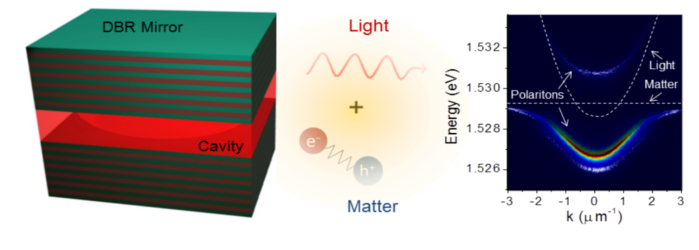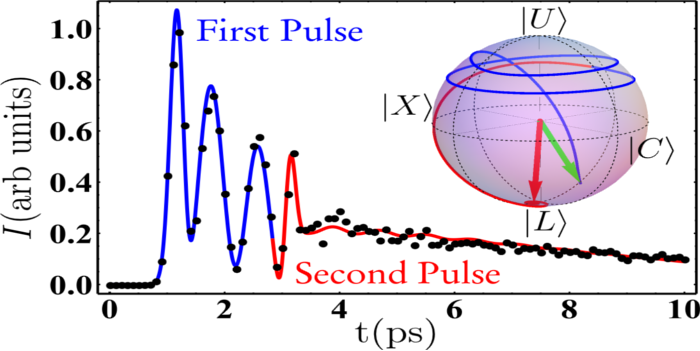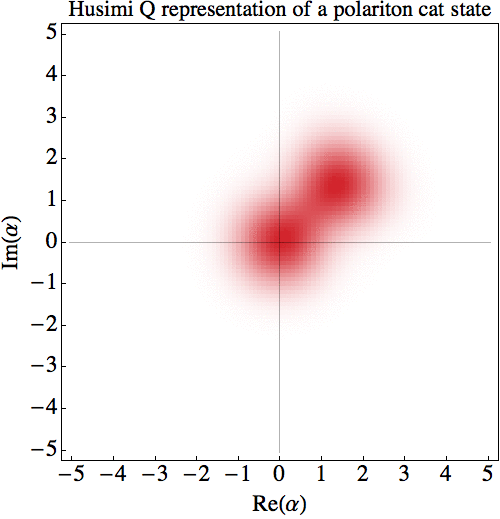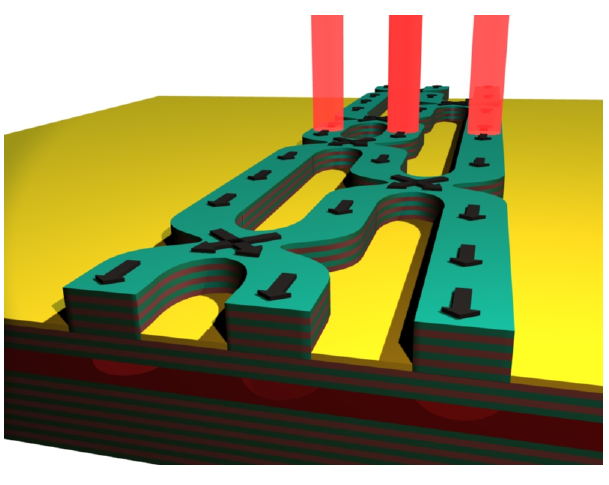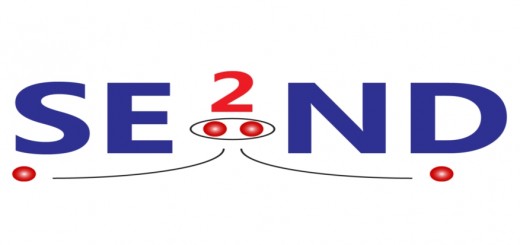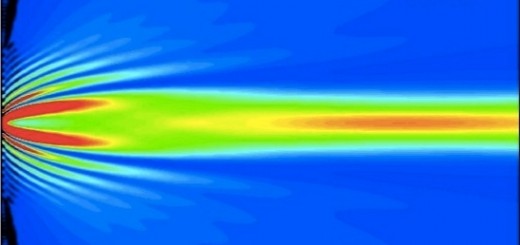POLAFLOW – Polariton Condensates: From Fundamental Physics to Quantum Based Devices
 Funding agency: Seventh Framework Programme (FP7).
Funding agency: Seventh Framework Programme (FP7).
Duration: January 2012 – October 2017.
Principal Investigator: Fabrice P. Laussy
Project website: Click Here
Description:
Polaritons are quantum superpositions of light and matter [1]. At the meeting point between condensed matter and quantum optics, they are realized in specially engineered devices: semiconductor microcavities, (Fig. 1).
Their combinations of the antagonist properties of photons and excitons (electron-hole pairs) empower them with unique properties to investigate some fundamental questions of a variety of exotic quantum states that have been predicted by the theory and/or realized in other physical systems. Their semiconductor implementation makes them ideal to bring quantum physics in tomorrow’s technology.
The POLAFLOW project is a European Research Council research grant of five years duration with Prof. Daniele Sanvitto from the CNR in Lecce as the lead supervisor, in charge of the experiments and of the overall research activity, along with Dr. Fabrice Laussy from the UAM in Madrid, in charge of the theory and Prof. Pavlov Savvidis from the IESL-FORTH in Heraklion, Crete, in charge of sample growth and characterization.
The project aims at pushing forward the polariton frontier towards a fundamental understanding of the physics they host as privileged laboratories of the interaction of lightwith matter [2]. We mean to explore and control the classical dynamics on the one hand (Fig. 2) and reach the quantum regime where non-classical physics takes place with prospects for quantum information processing on the other hand (Fig. 3).
More specifically, the dynamics of the polariton flow as an exotic fluid is investigated to study the hydrodynamics of the fifth element of matter (the Bose-Einstein condensate and its derivatives) [3] and power possible devices [4]. Simultaneously, the quantum properties of the polaritons at the single particle level are pursued (Fig. 4), among other approaches, based on the theory of frequency-resolved photon correlations developped by our group [5].
In the long term, the project that has been successful in each of these research lines separately aims at bringing them together to open a newpage of the polariton physics as a platform for macroscopic quantum effects (Fig. 5).
The project is strong of a Ramon y Cajal researcher (Fabrice Laussy), a Marie Curie fellow (Elena del Valle), a post-doc (Dmitry Vishnevski), three Ph.-D students (Blanca Silva, David Colas and Juan-Pablo Restrepo Cuartas) and has strong collaborations with Carlos Sánchez, Guillermo Guirales (Ph. D in co-supervision with Prof. Boris Rodrigues, Colombia), William Junio-Lima (Ph. D in co-supervision with Prof. José Maria Villas-Boas, Brasil) and Camilo López Carreño (Colombia). We welcome collaborations and motivated applicants.
References:
- A.V. Kavokin, J.J. Baumberg, G. Malpuech and F.P. Laussy, “Microcavities”, Oxford University Press, 2011.
- F.P. Laussy. “Exciton-polaritons in microcavities”, volume 172, chapter 1. Quantum Dynamics of Polariton Condensates, pages 1-42. Springer Berlin Heidelberg, 2012.
- L. Dominici, D. Ballarini, M. De Giorgi, E. Cancellieri, B. Silva Fernández, A. Bramati, G. Gigli, F. Laussy, D. Sanvitto, “Backjet, shock waves and ring solitons in the quantum pond of a polariton superfluid”, arXiv:1309.3083, 2013.
- D. Ballarini, M. De Giorgi, E. Cancellieri, R. Houdré, E. Giacobino, R. Cingolani, A. Bramati, G. Gigli, and D. Sanvitto. “All-optical polariton transistor”, Nat. Comm., 4, 1778, 2013.
- B. Silva, A. González Tudela, C. Sánchez Muñoz, D. Ballarini, G. Gigli, K. W. West, L. Pfeiffer, E. del Valle, D. Sanvitto and F. P. Laussy, “Colored-photon antibunching from an out-of-equilibrium condensate”, arXiv:1406.0964, 2014.

